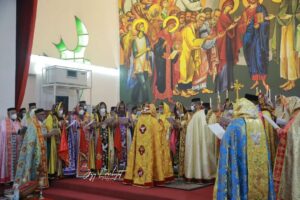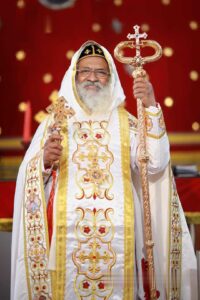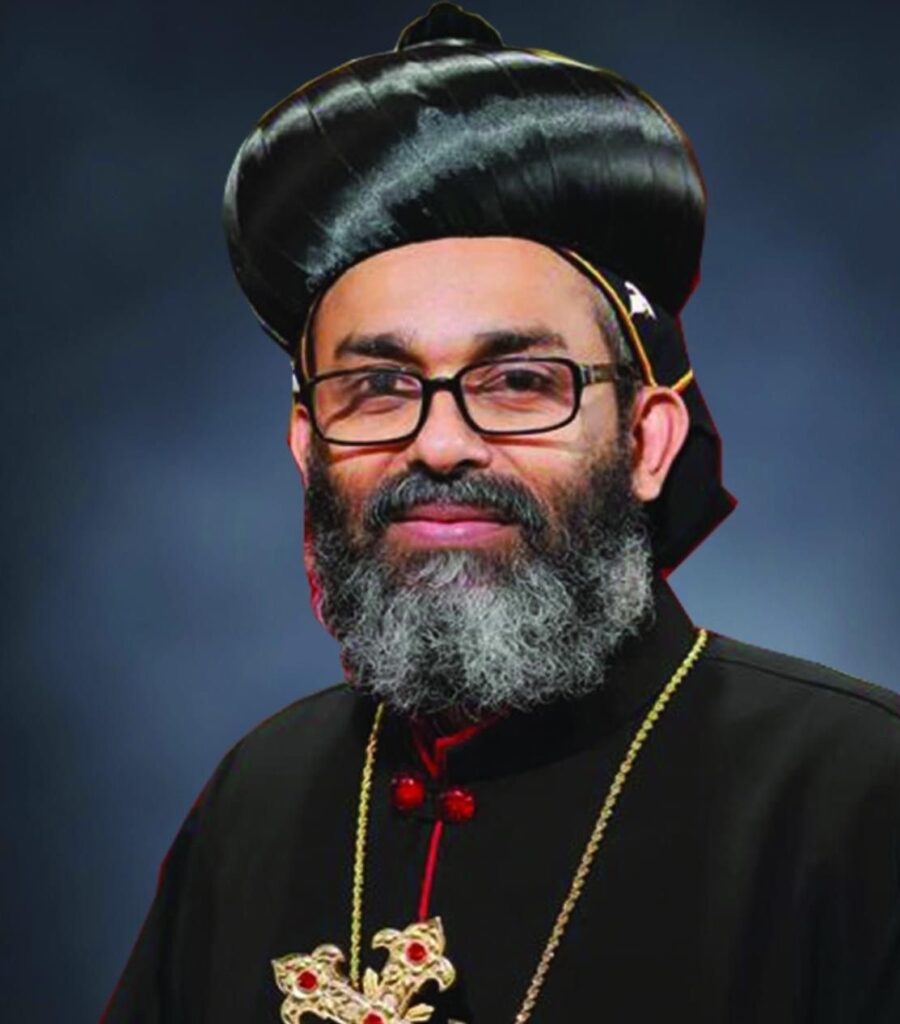Malankara Orthodox Syrian Church
The Malankara Orthodox Syrian Church was founded by St. Thomas, one of the twelve apostles of Jesus Christ, who came to India in A.D. 52. At least from the fourth century, the Indian Church entered into a close relationship with the Persian or East Syrian Church. From the Persians, the Indians inherited The East Syrian language and liturgies, and gradually came to be known as Syrian Christians. In the sixteenth century,Roman Catholic missionaries came to Kerala. They tried to unite the Syrian Christians and the Roman Catholic Church and this led to a split in the community. Those who accepted Roman Catholicism are the present Syro-Malabar Catholics. Later, Western Protestant missionaries came to Kerala and worked among the Syrian Christians. This also created certain divisions in the community. In the seventeenth century, the Church came in to relationship with the Antiochene Church, which again caused splits. As a result of this relationship, the Church received West Syrian liturgies and practices. The Church entered into a new phase of its history by the establishment of the Catholicate in Malankara in 1912.
At present, the Church is using the West Syrian liturgy. The faith of the Church is that which was established by the three Ecumenical Councils of Nicea (A.D. 325), Constantinople (A.D. 381) and Ephesus (A.D. 431).
The Church is in communion with the other Oriental Orthodox Churches namely, Syriac, Alexandrian, Armenian, Eritrean and Ethiopian Orthodox Churches. The Church is in good ecumenical relationship with the Eastern Orthodox, Roman Catholic and Protestant Churches.
This Church now consists of about 2.5 million members, who are spread all over the world, though the majority reside in The state of Kerala in south west India. The Supreme Head of the Church and the present Catholicos is H.H. Moran Mar Baselios Marthoma Mathews 3rd. H.H’s residence and the headquarters of the church is in Kottayam in Kerala state in south-west India. The Church as a whole is divided into 30 ecclesial units called dioceses and each diocese is served by a bishop, administratively and spiritually.
Our Faith

Our trust is in the One True God-Father, Son and Holy Spirit-eternal, self-existent, indivisible, infinite, incomprehensible, glorious, holy, not created or owing his being to something else, all-sovereign, creator of the whole universe. All things are from Him. We too have our being from Him, acknowledge him as the source of our being. Of the being of all else, of all good and therefore worthy of adoration and praise perpetual. About the First Person of the Trinity, the Father we know only what the Son and the Spirit have revealed to us, and still continue to reveal. The knowledge or statable doctrine, but true worship in the community of Faith. True knowledge of God comes through the quality of our life, then through intellectual clarification.
We believe that Jesus Christ the Son of God became a human being, rules in the universe. All power in heaven (the aspects of the universe now not open to our senses) and on earth (that is, the universe in all-its tangible, sensible aspects) is given to Jesus Christ the God-Man. Death and Evil have been overcome, but they are still allowed to function, serving Christ’s purposes. They will disappear-love and life will triumph-this is the faith of the Church, and this we affirm.
For us the Holy Spirit is Life-giver, Sanctifier and perfecter.










Catholicate of the East - Head of Malankara Church
The word ‘Catholicos’ means “the general head” or “general bishop”. It can be considered as equivalent to “universal Bishop”. This title and rank is much more ancient than the title Patriarch in the church.
In the ministry of the early church there were only three ranks namely; Episcopos (Bishop), Priest and Deacon. By the end of the third century or by the beginning of the fourth century, certain bishops of certain important cities or provincial capitals in the Roman empire gained pre- eminence than other bishops and they came to be known as Metropolitans. The Ecumenical councils of the fourth century recognised the authority of these Metropolitans.
By the fifth century the Bishops in major cities like Rome, Constantinople, Alexandria, Antioch etc. gained control over the churches in the surrounding cities. Gradually they became the heads of each independent regional church and were called Patriarch which means ‘common father’. The same rank in the Churches outside the Roman Empire was called Catholicos.
His Holiness Baselios Marthoma Mathews III was enthroned as the Catholicos of the East & Malankara Metropolitan (the Supreme Head of the Malankara Orthodox Syrian Church of India) on Friday, 15th October 2021. His Holiness is the 92nd Primate on the Apostolic Throne of St. Thomas.As stated in this article, you can browse your selection of available deals on smartphones and top brands and explore the cell phone service plans that best suit your needs.

Diocese of UK, Europe & Africa
Following a reconstitution of geographical areas in 2009, the Diocese of UK-Europe and Africa was formed to include all parishes, congregations and spiritual organisations of the Malankara Indian Orthodox Syrian Church within the geographical extents of the continents of Europe and Africa. The Diocese of UK-Europe and Africa is one of the 30 dioceses of the Malankara Indian Orthodox Syrian Church, which has its Holy See at the Catholicate Palace (Devalokam Aramana) , located in the city of Kottayam in the southern coastal state of Kerala,India.
The Diocese today constitutes 41 Parishes spread across 10 countries over the two continents of Europe and Africa with several more Congregations at many places. The headquarters of the Diocese is situated in the town of Swindon in the southwest of England (UK).
Bishop Abraham Mar Stephanos has been the Metropolitan of the Diocese of UK-Europe and Arica since November 2022 after taking over from Metropolitan HG Dr. Mathews Mar Thimothios.
Metropolitan Stephanos (previously Fr. Abraham Thomas) was born to Late Mr. K. A. Thomas and Mrs. Annamma, Kadakkamannil House, Mylapra in Pathanamthitta, Kerala, India on 11 June 1969 and hails from the parish of St. George Orthodox Church (Valiyapalli), Mylapra under the Diocese of Thumpamon. After completing his primary education from Seventh Day Adventist School, Pathanamthitta (1974-78) and Marthoma High School (1978-84), he completed the Pre-Degree course (1984-86) as well as Undergraduate Degree (Bachelor in Science) in Mathematics (1986-89) from the Catholicate College, Pathanamthitta, Kerala, India.




